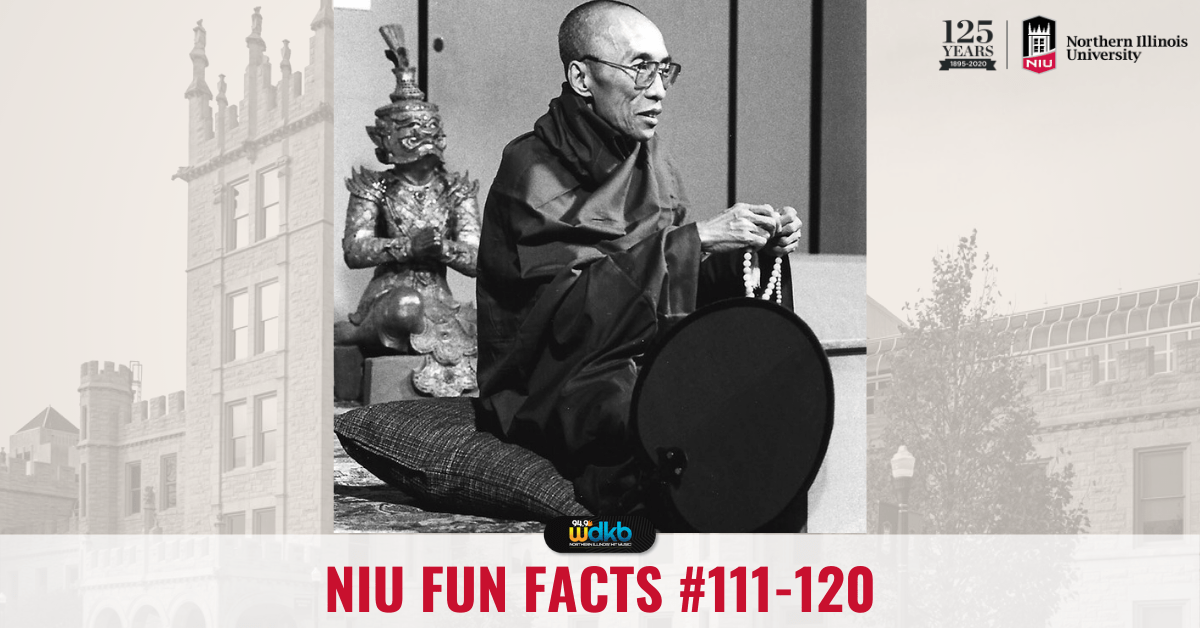
Featured in this batch of facts: NIU’s lagoon was enlarged thanks to manpower from the CWA (Civil Works Administration) and WPA (Works Progress Administration) Great Depression-era government programs, the first six international students to arrive at NIU came from the Philippines in 1904, and NIU beat out the University of Michigan, University of Wisconsin, Cornell and the Smithsonian Institution for the right to house the nation’s first and only Center for Burma Studies in 1986.
NIU CAMPUS
During the Great Depression of the 1930s, a government program known as the CWA, or Civil Works Administration, provided the manpower to recreate the lagoon. The CWA created a new Castle Drive and the bridge just north of the lagoon; other workers employed by the Works Progress Administration, or WPA, dredged and enlarged the lagoon.
NIU’s Carl Sandburg Auditorium, located in the Holmes Student Center, was opened and dedicated on May 21, 1968 as part of President Rhoten Smith’s week-long inauguration celebration. Speakers included Sandburg’s granddaughter and Chicago legend Studs Terkel.
The University Center, located in the heart of the campus, opened in 1962 and was created so students could have a place to relax in lounges, have fun in bowling alleys, meet friends in the cafeteria, hear speakers in the auditorium and see performers in the ballrooms. So popular was the facility that its size was doubled within a few years, and a 15-story tower added, creating the campus’s most noticeable landmark. In 1974, the Board voted to name NIU’s most popular gathering place in honor of Leslie A. Holmes, the president whose persistence had made it a reality.
The NIU College of Law had originally belonged to Lewis University and was originally located in the western suburb of Glen Ellyn. It wasn’t until 1979 that Governor James Thompson signed legislation transferring the College of Law from Lewis University to NIU. The NIU College of Law remained at its leased Glen Ellyn location until completion of renovations to the south wing of Swen Parson Hall had been completed in 1982.
NIU HISTORY
In 1903, the recently formed American colonial government of the Philippine Islands sent 100 young men to California to prepare for study at the college level. Thirty of those students chose to enter the teaching profession and in 1904 six of them were sent to Northern. These six were the very first overseas students to arrive at Northern. Since then, NIU has developed a strong reputation as a welcoming and supportive university for international students.
On March 5, 1963 the Illinois Board of Higher Education approved the establishment of NIU’s Center for Southeast Asian Studies. The center initially concentrated on Malaysia, Thailand and the Philippines, but eventually the faculty interests grew to include other Southeast Asian countries. Today faculty and student exchanges enrich both educational opportunities and mutual understanding between the U.S. and the 11 countries that are collectively known as Southeast Asia.
NIU’s strong reputation in Southeast Asian Studies was put to the test in the 1980s when the national association of Burma scholars (known as the Burma Studies Group) was seeking a location for its extensive collection. NIU beat out the University of Michigan, University of Wisconsin, Cornell and the Smithsonian Institution for the right to house the nation’s first and only Center for Burma Studies in 1986.
When the Teachers College Board approved the first master’s degree in 1951, its members were adamant that it must be a master’s in education. But by the mid-1950s, pro-growth factions at Northern argued that the institution’s future depended upon a more diverse graduate program. In 1958 NIU was approved to offer the Master of Arts and Master of Science degrees. The following year, the Master of Music and the Master of Fine Arts degrees joined the growing portfolio of graduate offerings.
In 1976 the group that started as the faculty caucus assumed a more formal role as the Faculty Assembly. A decade later the assembly met for months in the spring and summer of 1988; studied the constitutions of nearly 30 universities; and emerged with a plan for a true faculty senate at NIU. In 1989, the Faculty Senate then replaced the Faculty Assembly with broader representation, a more formal structure, and a specific mission as the “authoritative and official voice of the university faculty.”
J. Carroll Moody, professor of history, was the first president of the new NIU Faculty Senate. After serving as president for the Senate, Moody went on to serve as provost in the 1990s.






